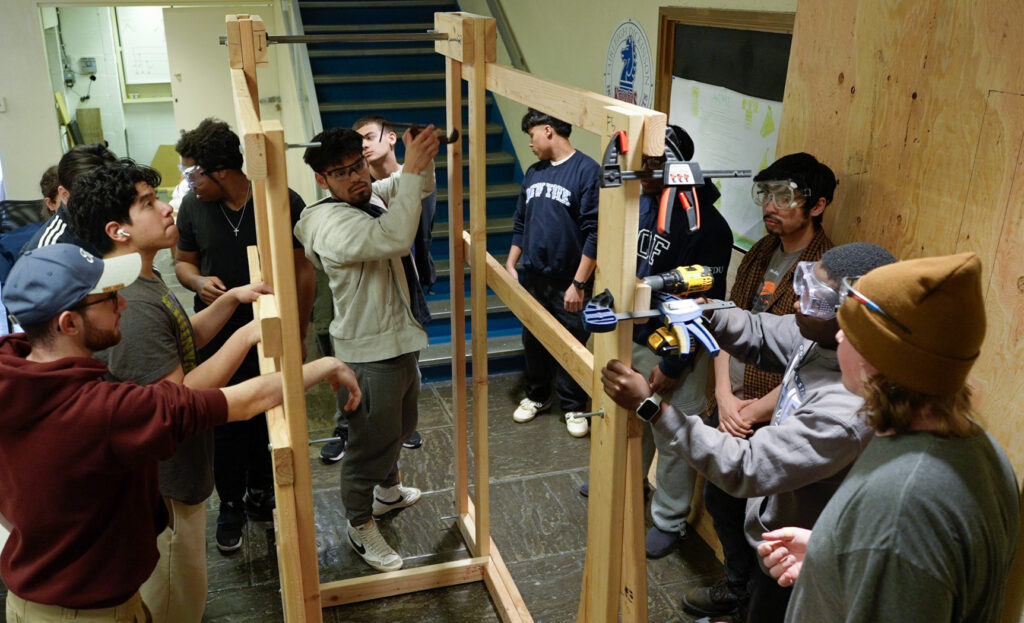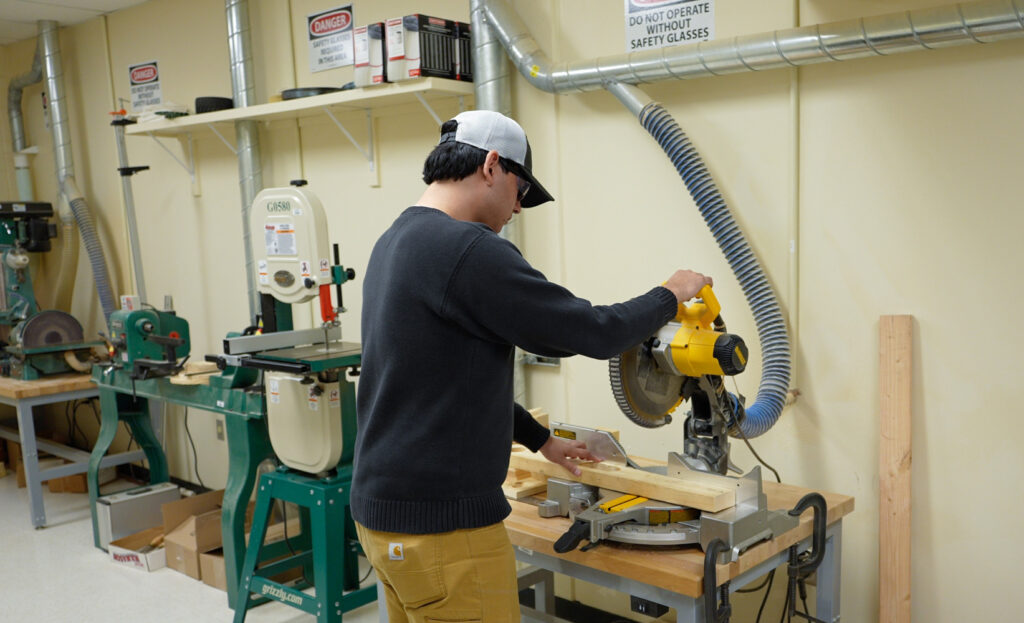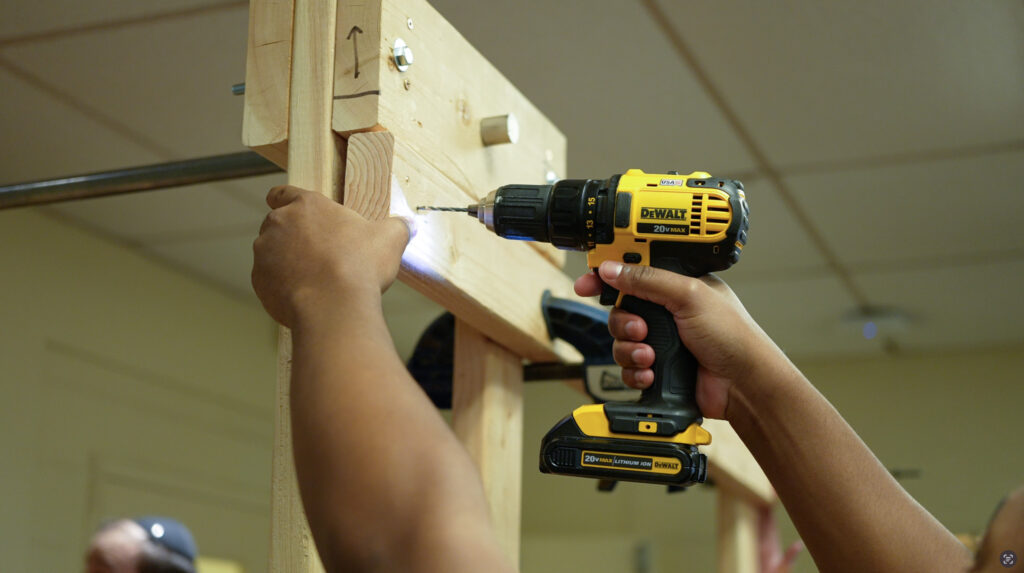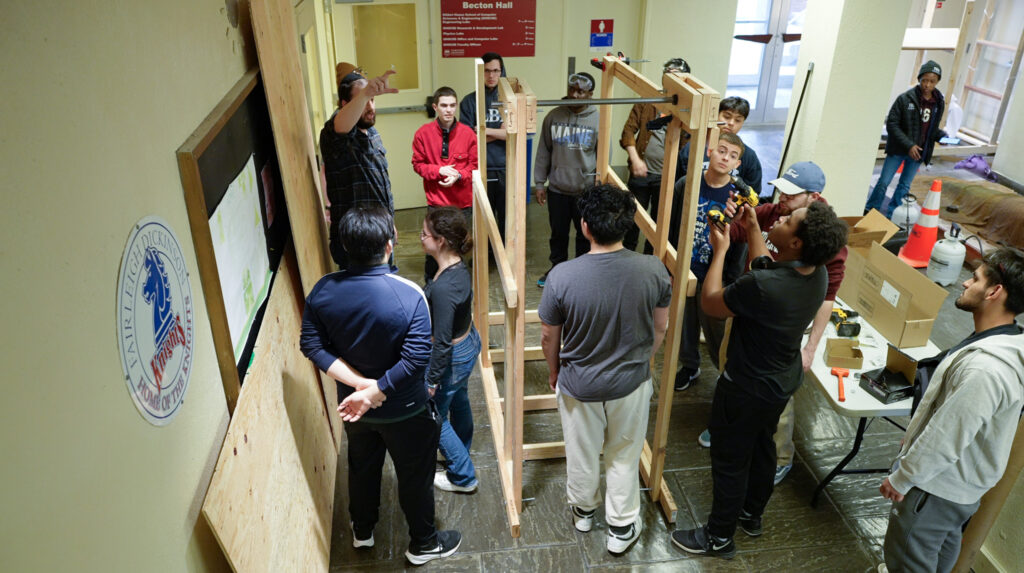From Blueprints to Battle: FDU Students Take Aim in Trebuchet Competition

By Kenna Caprio
April 18, 2025 — Come Friday, May 2, a group of engineering and computer science students will launch volleyballs out of a giant trebuchet on the Commencement Green at the Metropolitan Campus.
A trebuchet, a medieval weapon, is similar to a catapult. The main difference comes in how the machines launch an object. The trebuchet relies on a counterweight and gravity to release, while the catapult uses tension and a spring.
This year marks the third trebuchet competition, and FDU students will be competing against a team from Stevens Institute of Technology in Hoboken, N.J. The first year, FDU students competed in teams against one another. Last year, Stevens sent a team to participate.

Most of the FDU participants are members of the American Society of Mechanical Engineers club at the Metropolitan Campus. The club’s executive board runs the competition.
“Building a working trebuchet takes about a year with dedicated planning and execution. We spend a whole semester alone calculating the correct forces, designing, redesigning, scheduling and coordinating,” says Gabriel Anwar, a senior mechanical engineering major at the Metropolitan Campus.
This year, Aaron Braverman, a senior mechanical engineering major at the Metropolitan Campus, is the project and club’s design lead. As treasurer, Anwar manages the team’s budget, and as president, Brett Caparas, a junior mechanical engineering major at the Metropolitan Campus, oversees club operations and is its spokesperson.
The group spends the entire fall semester planning and designing, and the entire spring semester building and testing.
Building on their previous success, the team used last year’s design as a basis for this year’s model. The trebuchet must be seven feet tall by seven feet wide and 200 pounds or less. For continuity, all teams will launch a volleyball at the competition.

The design goes from paper to computer-aided design (CAD) software. They run a simulation and then the team measures and remeasures.
“In general, in engineering, the three biggest restraints to any projects are size, weight and costs,” says Braverman. Their budget is $1,000.
“We can’t just buy all the pieces from Home Depot. All the pieces we use are cut, milled and manufactured to our specifications,” Braverman says. “We make a list of build materials and label everything. Then we measure to see how everything is going to fit together.”
About 15 students are participating in the project this year, with upperclassmen teaching younger students how to manage the process and work the machine shop.
“We give valuable hands-on time in the machine shop to get them comfortable with power tools and large-scale equipment, like drill presses, bandsaws, lathes, mills and miter saws,” says Anwar.

The team is currently mid-build, and will test and adjust as necessary right up until competition day.
“Students learn to work together and get used to the environment because it’s crucial as an engineer to understand working as a team. I want underclassmen to know that they can join the club and the team right away, they don’t have to wait to become involved,” says
Caparas.
“You get to use the skills you’re learning in class right now on a real-world application. You can build something, make it work and apply all that theory. Having that on your résumé is a big deal. Being part of this build has helped previous participants land a job or an internship.”
The competition begins at noon on the Commencement Green and the FDU community is invited to attend and cheer on the team.